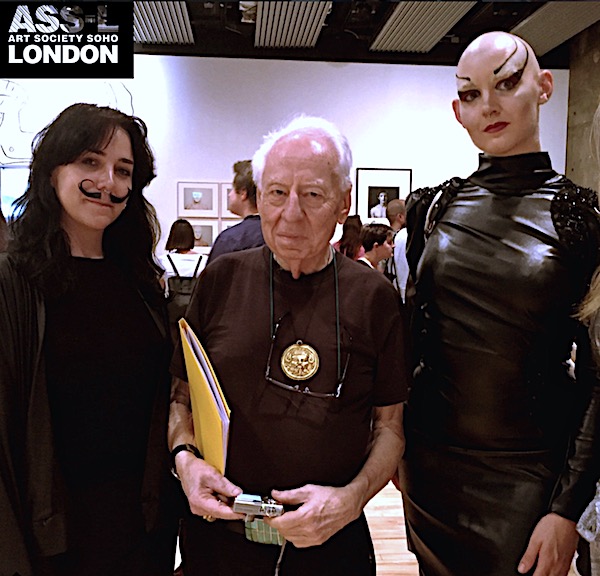The new show at the Hayward Gallery’s Heni Project Space – which basically means just a fairly small room on the ground floor, to your right as you enter – leaves me in two minds.
A pioneering effort, presented as it is in a semi-official space – ELS
Entitled Drag: Self-portraits and Body Politics, it’s genuinely a pioneering effort, presented as it is in a semi-official space. Quite likely to upset at least a few members of the supposedly liberal but in fact often deeply self-righteous public for art that London offers now. Though the show offers both male and female cross-dressers, in tactfully equal numbers, the emphasis is inevitably on men who dress as women. This form of cross-dressing is long rooted in popular culture. Very much so here in Britain, where pantomime dames are part of a long-established tradition.

We also have upfront in the spotlight today, the starry figure of Grayson Perry, who has just played an important role in the selection and creation of the Royal Academy’s 150th-anniversary show. Perry does not figure in the Hayward show, but he hovers over it in spirit, not simply in his own right, as Britain’s currently best-known cross-dresser, but also as our art world’s anointed ‘village explainer’, in direct succession to the late Lord Clark of Civilisation. In 2013 Perry delivered the Reith Lectures. You don’t get much more establishment than that. And yes, he was wearing a dress, His central position in British visual culture today is a resonant symbol of how much things have changed in this sphere since Lord Clark’s demise in 1983 – coincidentally the year before the very first edition of the Turner Prize.
If one looks at what drag does, one sees that in its traditional form it is deeply ambiguous. It celebrates women, and at the same time, it mocks them. And it also sets out to rock the boat. The drag artiste is the catalyst who destabilises previously stable social conventions and situations. He/she is an outspoken Holy Fool with roots in the commedia dell’arte, and maybe even further back than that. He/she specialises in saying the unsayable. In one way this is what the #MeToo feminists are after, and in another, it isn’t. It disturbs their narrative about the still un-enfranchised female condition. Drag queens subvert ‘real’ women. They are rambunctious queens of misrule. They tell you what you can get away with if you try. If ‘real’ women are too polite, or still too bound by social convention to attempt this kind of disruption, their drag sisters will do it for them.
Looking around the Hayward Gallery display, one notes that it has no overt ambitions to shake things up, and indeed hasn’t been given the elbow room to do so. Modesty rules throughout. There are photographs of moderate size, plus a few screens equipped with headphones. One three-dimensional object, looking rather lonely in its free-standing glass case. Nothing big. Nothing loud. Nothing raucous.
If it nevertheless draws the kind of crowd I suspect it is going to (the private view was packed out), the show’s modesty won’t do it much good. The show is free entry, and there will be queues to get in. A bit of a drag in another sense of the term, but maybe worth standing in line for nevertheless. Despite its dinky size, this is much more of an epoch-making event that what you’ll see in the rest of the Hayward’s spaces. Or indeed elsewhere in the sleepy summer galleries of our capital city.
DRAG: Self-portraits and Body Politics 22 AUG 2018 – 14 OCT 2018 FREE

